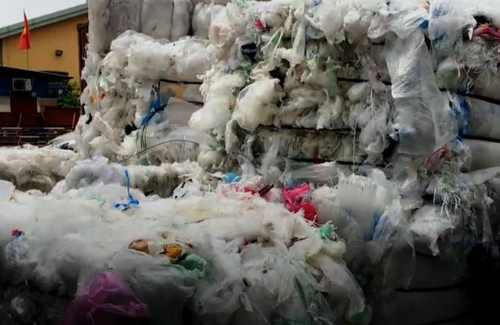[ad_1]

Most of the scrap is imported for re-export to China
According to Tan Cang Sai Gon Corporation, the volume of waste materials that arrived the port in the first six months of the year increased sharply, with 8,000 containers still uncleared.
One third of the 8,000 containers have been there for more than 90 days, creating an alarming situation as the volume of imported scrap has increased several times over the previous year.
A manager of a company in HCMC said most of the containers are temporary imports for re-export later. However, Vietnamese importers cannot re-export to China as China last year informed WTO that it had stopped importing 24 kinds of waste. The country has prohibited the import of all kinds of household waste.
|
Vietnamese importers cannot re-export to China as China last year informed WTO that it had stopped importing 24 kinds of waste. The country has prohibited the import of all kinds of household waste. |
Many enterprises would rather give up imports, because the costs to ruin the scrap would be much higher than the pay for it. As a result, scrap has been left for many days at ports.
An analyst said as the imports are dirt cheap, importers can expect profit six times higher after refurbishment. However, importers understand the high risk of the business, and always take precarious measures. Enterprises declare fake names of companies, so that they can deny their responsibility if something happens.
The analyst went on to say that waste materials not only go through Cat Lai Port, but also Hai Phong and Cai Lan ports as well. The imports can be classified into three groups – outdated viscera; plastics, mechanical engineering and refrigeration waste; and used clothes.
All the products come from three sources – Japan, Hong Kong, and Singapore (scrap collected from Australia, Malaysia and Europe).
Nguyen Quang Tuan of Tan Cang Sai Gon complained that because of the big volume of waste, the activities at the port have been seriously affected. The goods clearance has become slower, so businesses have to pay higher for storage fee.
According to Le Van Nhien, deputy head of the Cat Lai Customs Sub-agency, unowned substandard imports will be treated in accordance with the Ministry of Finance’s Circular 203 dated in 2014. However, the treatment will be very costly.
As importers don’t make declarations for customs clearance, the customs agencies will have to ask the port border police search the consignments. If the consignments have prohibited items, they will be treated in accordance with the law.
Agencies have stopped granting import licenses. Tan Cang Sai Gon has stopped receiving containers of scrap materials at Cat Lai and Hiep Phuoc Port since early June.
RELATED NEWS
Scrap steel imports threaten Vietnam’s environment
Imported waste flooding Vietnam’s ports
Mai Nam
[ad_2]
Source link
